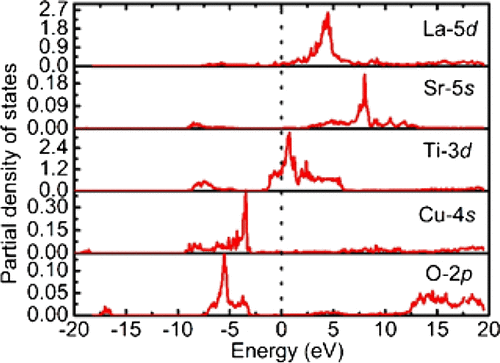当前位置:
X-MOL 学术
›
ACS Appl. Energy Mater.
›
论文详情
Our official English website, www.x-mol.net, welcomes your feedback! (Note: you will need to create a separate account there.)
Electrochemical Analysis of a Titanate-Based Anode for Direct Carbon Fuel Cells
ACS Applied Energy Materials ( IF 6.4 ) Pub Date : 2020-09-02 , DOI: 10.1021/acsaem.0c01532 Amjad Ali 1, 2 , Rizwan Raza 2, 3 , M. Arif Khalil 4 , M. Iqbal Hussain 5
ACS Applied Energy Materials ( IF 6.4 ) Pub Date : 2020-09-02 , DOI: 10.1021/acsaem.0c01532 Amjad Ali 1, 2 , Rizwan Raza 2, 3 , M. Arif Khalil 4 , M. Iqbal Hussain 5
Affiliation

|
The grand challenge in the commercialization of direct carbon fuel cell (DCFC) technology is the development of a cost-effective and thermally stable material, which facilitates fast ionic and electronic conduction and exhibits good resistance for carbon deposition at electrodes. Titanate-based materials have high ionic and electronic conductivity at higher temperature. Perovskite anodes based on titanate and transition metals show a good catalytic activity for hydrocarbon fuels. Therefore, perovskite materials, based on lanthanum strontium and copper titanate La0.4Sr0.6CuxTi1–xO3-δ (x = 0.02, 0.04, 0.06, and 0.08), were synthesized using the sol–gel method and examined as anodes for DCFCs. The powders were analyzed using various characterization techniques. X-ray diffraction shows that the material has a cubic perovskite structure. The conductivity of the synthesized powder LS8CT was found to be 4.21 Scm–1 at 600 °C. The button cell developed using LS8CT exhibits a performance of 61mWcm–2 at 600 °C. The computational study using the Wien2k code has been performed, which shows that the Fermi level is at nonzero density of states (DOS) and reveals that the compound is metallic in nature. Therefore, no forbidden region occurs between the maxima of the valence band and minima of the conduction band. Results of DOS confirm the metallic nature of the compound. On the basis of theoretical and experimental studies, it can be depicted that substitution of Cu in La0.3Sr0.7TiO3 increases the conductivity. Therefore, a La0.4Sr0.6CuxTi1–xO3-δ perovskite material can be used as an anode for DCFCs.
中文翻译:

直接碳燃料电池基于钛酸酯的阳极的电化学分析
直接碳燃料电池(DCFC)技术商业化的最大挑战是开发一种经济高效且热稳定的材料,该材料可促进快速的离子和电子传导,并具有良好的抗碳沉积能力。钛酸酯基材料在较高温度下具有高离子电导率。基于钛酸盐和过渡金属的钙钛矿阳极对烃类燃料表现出良好的催化活性。因此,钙钛矿材料基于镧锶和钛酸铜La 0.4 Sr 0.6 Cu x Ti 1 – x O3 -δ(x= 0.02、0.04、0.06和0.08),使用溶胶-凝胶法合成,并作为DCFC的阳极进行检查。使用各种表征技术分析粉末。X射线衍射表明该材料具有立方钙钛矿结构。合成粉末LS8CT在600°C下的电导率为4.21 Scm –1。使用LS8CT开发的纽扣电池表现出61mWcm –2的性能在600°C下。已经进行了使用Wien2k代码的计算研究,该研究表明费米能级处于非零密度状态(DOS),并且表明该化合物本质上是金属。因此,在价带的最大值与导带的最小值之间不存在禁止区域。DOS的结果证实了该化合物的金属性质。在理论和实验研究的基础上,可以描述出在La 0.3 Sr 0.7 TiO 3中取代Cu可以提高电导率。因此,可以将La 0.4 Sr 0.6 Cu x Ti 1 – x O3 -δ钙钛矿材料用作DCFC的阳极。
更新日期:2020-09-28
中文翻译:

直接碳燃料电池基于钛酸酯的阳极的电化学分析
直接碳燃料电池(DCFC)技术商业化的最大挑战是开发一种经济高效且热稳定的材料,该材料可促进快速的离子和电子传导,并具有良好的抗碳沉积能力。钛酸酯基材料在较高温度下具有高离子电导率。基于钛酸盐和过渡金属的钙钛矿阳极对烃类燃料表现出良好的催化活性。因此,钙钛矿材料基于镧锶和钛酸铜La 0.4 Sr 0.6 Cu x Ti 1 – x O3 -δ(x= 0.02、0.04、0.06和0.08),使用溶胶-凝胶法合成,并作为DCFC的阳极进行检查。使用各种表征技术分析粉末。X射线衍射表明该材料具有立方钙钛矿结构。合成粉末LS8CT在600°C下的电导率为4.21 Scm –1。使用LS8CT开发的纽扣电池表现出61mWcm –2的性能在600°C下。已经进行了使用Wien2k代码的计算研究,该研究表明费米能级处于非零密度状态(DOS),并且表明该化合物本质上是金属。因此,在价带的最大值与导带的最小值之间不存在禁止区域。DOS的结果证实了该化合物的金属性质。在理论和实验研究的基础上,可以描述出在La 0.3 Sr 0.7 TiO 3中取代Cu可以提高电导率。因此,可以将La 0.4 Sr 0.6 Cu x Ti 1 – x O3 -δ钙钛矿材料用作DCFC的阳极。



























 京公网安备 11010802027423号
京公网安备 11010802027423号